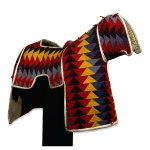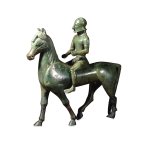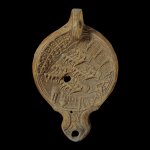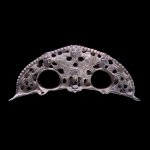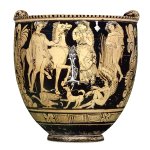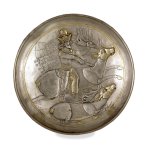♘امیرحسین♞
♘ مدیریت انجمن اسب ایران ♞
Quilted cotton horse armour
This horse armour is made from several pieces of brightly coloured cloth sewn together. They are stuffed with kapok, the wool-like strands that surround the seeds of the silk cotton tree, creating a heavy garment. In full battle the war-horse would also have worn chainmail or pieces of leather across the flanks. A headpiece of metal and cloth completed the outfit. These colourful horses did not always go into battle but instead they were often used by the bodyguards for leaders. Quilted armour is still worn today but only on ceremonial occasions.
This particular horse armour was probably used during the Battle of Omdurman (2 September 1898), which marked the end of the Mahdist state in Sudan. This state had been founded by the Mahdi in 1885 but was fully established by his successor, the Khalifa 'Abdallahi. In 1896 Kitchener was ordered to invade Sudan to protect British interests in the Nile Valley. His army of about 25,000 troops met the 60,000-strong Mahdist army at Omdurman and won a decisive victory. The Khalifa fled, to be killed a year later, and Kitchener became governor-general of Sudan under the Anglo-Egyptian Condominium.
This horse armour is made from several pieces of brightly coloured cloth sewn together. They are stuffed with kapok, the wool-like strands that surround the seeds of the silk cotton tree, creating a heavy garment. In full battle the war-horse would also have worn chainmail or pieces of leather across the flanks. A headpiece of metal and cloth completed the outfit. These colourful horses did not always go into battle but instead they were often used by the bodyguards for leaders. Quilted armour is still worn today but only on ceremonial occasions.
This particular horse armour was probably used during the Battle of Omdurman (2 September 1898), which marked the end of the Mahdist state in Sudan. This state had been founded by the Mahdi in 1885 but was fully established by his successor, the Khalifa 'Abdallahi. In 1896 Kitchener was ordered to invade Sudan to protect British interests in the Nile Valley. His army of about 25,000 troops met the 60,000-strong Mahdist army at Omdurman and won a decisive victory. The Khalifa fled, to be killed a year later, and Kitchener became governor-general of Sudan under the Anglo-Egyptian Condominium.

